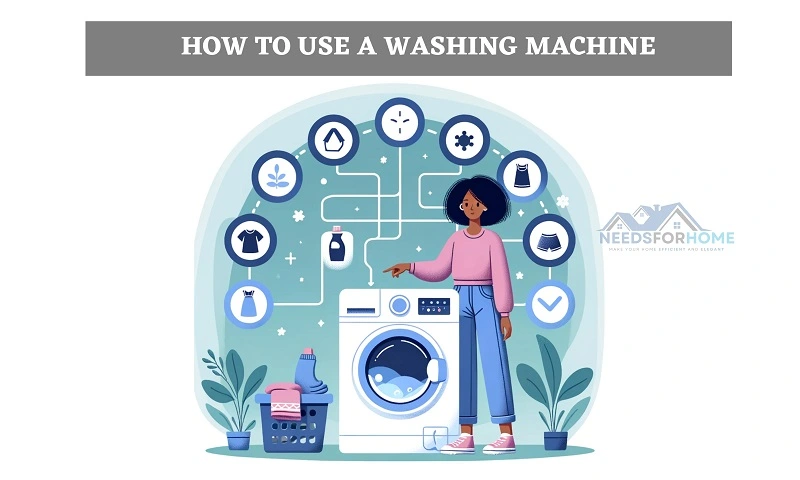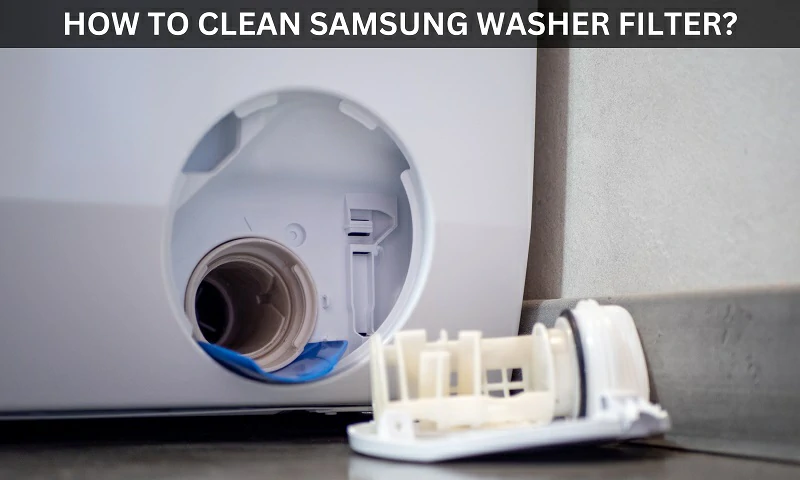With the increasing emphasis on sustainability and reducing energy usage, the efficiency of washing machines has become a significant factor for consumers. Energy-efficient washing machines not only save on power consumption but also help to minimize the environmental impact of daily chores.
In this article, we will explore the importance of energy efficiency in washing machines, the advantages of using such appliances, and how consumers can make more informed choices when it comes to purchasing a new washer.

Understanding Energy Efficiency Ratings in Washers: IMEF and IWF
When looking for a new washing machine, understanding energy efficiency ratings is essential. There are two major metrics used in determining the energy efficiency of a washer. They are:
- Integrated Modified Energy Factor (IMEF)
- Integrated Water Factor (IWF)
The IMEF measures the energy efficiency of the washing machine by taking into account the energy used during the wash and spin cycles, as well as the energy consumed when the machine is in standby mode. A higher IMEF rating indicates a more energy-efficient washing machine.
On the other hand, the IWF measures the water efficiency of the washing machine by considering the water used during the wash and rinse cycles. A lower IWF rating indicates a more water-efficient washing machine.
It’s important to consider both ratings when choosing a new washing machine, as they provide a comprehensive understanding of its overall energy and water efficiency. Additionally, choosing a machine with high IMEF and low IWF ratings can also minimize environmental impact.
When comparing different washer models, look for the energy rating which will be a yellow EnergyGuide label that displays the IMEF and IWF ratings, as well as an estimated yearly energy cost. This information can help you make the right decision based on the long-term operating costs of the washing machine.
By understanding and comparing IMEF and IWF ratings, consumers can make a more environmentally friendly and cost-effective choice when purchasing a new washing machine.
Advantages of ENERGY STAR Certified Clothes Washer
- One of the main advantages of ENERGY STAR certified washing machines is their ability to save consumers money on their utility bills.
- The high-efficiency washers like front load and top load with impellers are designed to be more energy efficient, using up to 45% less water and 25% less energy than standard models with agitators.
- Energy-efficient models reduce the environmental impact of doing laundry and lower the cost of running the machine.
- Another benefit of energy-certified washing machines is their superior performance. They are designed to clean clothes more effectively while being gentle on fabrics, resulting in cleaner and longer-lasting clothing.
- The best high-efficiency machines are often equipped with advanced features and different wash cycles providing users with more convenient and efficient laundry experiences.
- Furthermore, ENERGY STAR rated washing machines are known for their durability and reliability, leading to fewer breakdowns and reduced maintenance of the washing machine over time. These machines also tend to have improved warranties and quality construction, giving consumers peace of mind that their investment will last for years to come.
- Energy Efficient washing machines contribute to a healthier environment by reducing greenhouse gas emissions and water consumption.
- By choosing an energy-efficient model, consumers can feel good about reducing their ecological footprint and making a positive impact on the planet.
Overall, the numerous advantages of STAR rated washing machines make them a smart choice for consumers looking to save money, improve cleaning performance, and reduce their environmental impact.
Choosing the Right Washing Machine Size and Model for High-Efficiency
When it comes to choosing the right washing machine size and model for higher energy efficiency, there are several factors to consider.
First and foremost, the importance of selecting the appropriate size cannot be overstated. A machine that is too small for your laundry needs will result in more frequent laundry cycles, consuming more water and energy in the process.
On the other hand, a machine that is too large will not only waste energy and water for smaller loads but will also take up unnecessary space in your home. Therefore, selecting a washing machine with the right capacity for your specific needs is crucial for maximizing energy and water efficiency.
In addition to size, the model of the washing machine can also impact its energy consumption. There are various designs of energy-efficient models available, including stackable, under-the-counter, and combination washer-dryer units.
- Stackable models are a great option for those with limited space, allowing for a separate washer and dryer to be stacked on top of each other.
- Under-the-counter models are designed to fit seamlessly into smaller spaces, such as kitchens or bathrooms, making them a practical choice for those living in apartments or smaller homes.
- Combination washer-dryer units are ideal for those who are short on space but still require the functionality of both a washer and a dryer.
By considering the size and design of the washing machine, consumers can get the right clothes washer model that will not only meet their laundry needs but also maximize energy efficiency. Ultimately, investing in the right washing machine size and model for energy efficiency can lead to long-term cost savings and a reduced environmental impact.
Front Load Washers vs. Top Load Washers: Energy Efficiency Compared
Among the high-efficiency washing machine models, front-load washers tend to have the upper hand compared to top-load washers. This is primarily due to the fact that front-load washers use less water and energy to operate.
| Top Load washer | Front Load Washer | |
|---|---|---|
| Water Consumption | Can use up to 23 gallons per load | Can use about 13 gallons of water per load |
| Energy Rating | Only some high-efficiency models have energy star rating | Almost all models are ENERGY STAR certified |
| Design | Uses Agitator for tumbling the clothes which requires powerful motor that consumes more energy | Front-load washing machine uses gravity for tumbling the clothes and doesn’t require a high speed motor |
| Washing Time | Longer wash cycles in the top-loading machines consume more energy | Front loading machines have short cycles and are more efficient |
| Washing Performance | Performs well but consumes more water and power | High performance with low water and energy consumption |
Innovative Features in Modern Energy-Efficient Washing Machines
Modern energy-efficient washing machines come with a range of innovative features aimed at saving water, energy, and time while delivering superior cleaning performance.
- Automatic Load Sensing
- High-Efficiency Motor Drives
- Innovative Drum Design
- Combo Units
- Smart Dispensers
- Wi-Fi Connectivity
Automatic Load Sensing
One of the most impressive features is the automatic load-sensing technology, which allows the machine to adjust the water level according to the size of the load. This not only prevents water wastage but also ensures that the clothes are washed efficiently.
High-Efficiency Motor Drives
Another innovative feature is the use of efficient motors and advanced drive systems that reduce energy consumption and noise levels while maintaining optimal cleaning performance. With this technology, washers use less energy and also have a longer life.
Innovative Drum Design
Many modern washers are equipped with innovative drum designs that improve water and detergent distribution, resulting in better cleaning and shorter cycles. The impeller design with innovative fins helps in effective tumbling using very little energy.
Combo Units
Instead of using a separate dryer for drying the clothes, the built-in heaters in the washers can dry the clothes efficiently. Also, the heaters allow the water to be heated to the desired temperature, which is particularly useful for removing tough stains and sanitizing clothes. So, you don’t have to spend more energy on heating water or drying the clothes.
Smart Dispensers
Advanced detergent and fabric softener dispensing systems ensure that the right amount of cleaning products is used, preventing wastage and optimizing cleaning results. Using the right type of detergent with the appropriate amount will reduce the suds and use less water and energy to rinse the clothes.
Wi-Fi Connectivity
Energy-efficient washing machines are equipped with smart features such as WiFi connectivity, which allows users to control and monitor the machine remotely from their smartphones. These smart features enable you to turn on/off the machine conveniently and use eco-washing modes for lower energy consumption.
Overall, these innovative features make modern energy-efficient washing machines a practical and environmentally friendly choice for consumers looking to save time, money, and resources while achieving the best cleaning results for their clothes.
Practical Tips for Energy-Saving Laundry Habits
When it comes to saving energy in the laundry room, there are several practical tips that can help you lower your energy consumption. Here are some of the practices you can use to save more energy on your laundry.
- First, it is important to consider the type and age of your washing machine. If you have an older, less efficient model, consider upgrading to a high-efficiency top-load washer or front-load washer, which uses less water and energy while still delivering a thorough clean.
- Be mindful of the amount of water you use for each load. It’s important to choose the right type of wash program according to the laundry load and the type of fabric used to maximize efficiency. If you need to wash a smaller load, adjust the settings on your machine to accommodate the smaller size.
- Another tip for saving energy is to wash your clothes in cold water whenever possible. Most of the energy used by a washing machine goes towards heating the water, so by choosing the cold water setting, you can significantly reduce energy consumption.
- Finally, consider air-drying your clothes whenever possible instead of using a dryer. Hanging your laundry on a clothesline or drying rack can help save energy and reduce wear and tear on your clothes.
By implementing these practical tips for energy-saving laundry habits, you can reduce your energy usage and lower your utility bills while still keeping your clothes clean and fresh.


